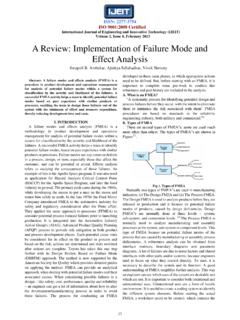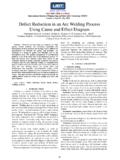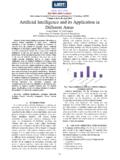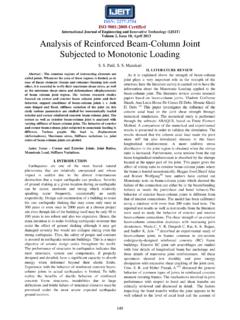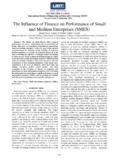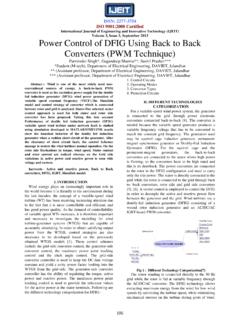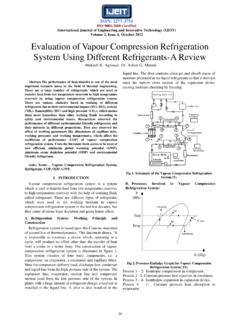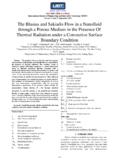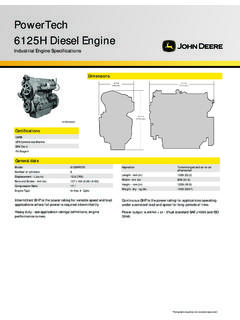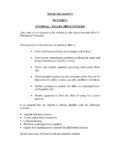Transcription of TRANSITION PROCESS DESIGN BY USING SIX …
1 ISSN: 2277-3754. ISO 9001:2008 Certified International Journal of Engineering and Innovative Technology (IJEIT). Volume 2, Issue 2, August 2012. TRANSITION PROCESS DESIGN by USING Six Sigma Methodologies Archana S. Katkade, Varsha N. Karandikar Abstract - Today, organizations strive for an improved level varies from 3 months to 6 months, which after due of PROCESS capability and quality to achieve the bottom-line deliberation was proposed to be targeted to be reduced to objectives of generating a profitable margin and sustainable 30 Days.
2 Competitiveness and share in the market. The most important B What is TRANSITION ? phase of the business PROCESS is TRANSITION which leads to the It is a PROCESS of change from one place or state or stage success or failure of the business. So it is very essential to do to another. the activity without any defect. Six Sigma is a quality improvement strategy that helps companies to achieve these - A TRANSITION is like a project and needs planning and results. The purpose of the paper is to provide an examination management.
3 TRANSITION Management is an ongoing and methodology, centering on its implementation and its activity throughout the life of the TRANSITION . application to a real business PROCESS [1]. The result of the paper will be a proposal detailing the customized - It involves constant monitoring of activities to ensure implementation framework for the company, along with the all tasks are completed on time, all risks are benefits derivable from the application of the methodology. identified and mitigated, and all issues are addressed The purpose of this paper is to DESIGN the TRANSITION PROCESS to in a timely manner.
4 Satisfy a growing demand and expectation from customers while coping with increasing system complexity and limited C Six sigma tools and techniques resources by USING six sigma approach. Continuous Six Sigma projects follow two project methodologies improvement tools and techniques are introduced to address inspired by Deming's Plan-Do-Check-Act Cycle. These these issues, allowing the Facility managers quality services methodologies, composed of five phases each, bear the with efficient processes. acronyms DMAIC and DMADV [3].
5 A) DMAIC is used for projects aimed at improving an Index terms DMAIC, Six sigma, TRANSITION . existing business PROCESS . DMAIC is pronounced as "duh-may-ick". B) DMADV is used for projects aimed at I. INTRODUCTION. creating new product or PROCESS designs. DMADV is Six Sigma seeks to improve the quality of PROCESS pronounced as "duh-mad-vee". Among these two outputs by identifying and removing the causes of defects techniques DMAIC cycle is selected for the TRANSITION (errors) and minimizing variability in manufacturing and PROCESS DESIGN to improve current PROCESS to save time, business processes [1].
6 It uses a set of quality cost and ultimately to increase quality and reliability of management methods, including statistical methods, and system. The DMAIC project methodology has five creates a special infrastructure of people within the phases: organization ("Black Belts", "Green Belts", etc.) who are experts in these methods. Each Six Sigma project carried out within an organization follows a defined sequence of steps and has quantified financial targets (cost reduction or profit increase) [2]. II.
7 METHODOLOGY. AProblem statement:- In this paper analysis is carried in the company Knight Frank India Pvt. Ltd. to identify the variations in TRANSITION PROCESS . Currently the company is facing problems related to TRANSITION PROCESS which is most important stage of their business. Presently the procedure is not well define and organized according to the requirement. List of documents required during TRANSITION are also not defined, thus proper database is not available while dealing with new business TRANSITION .
8 Again due to lack of availability of Back up, support skilled manpower, equipments & infrastructure, the cost involved in the TRANSITION PROCESS goes high. Study of previously mobilized sites suggest that TRANSITION PROCESS period Fig 1: DMAIC Cycle 1. ISSN: 2277-3754. ISO 9001:2008 Certified International Journal of Engineering and Innovative Technology (IJEIT). Volume 2, Issue 2, August 2012. Define the problem, the voice of the customer, and the project goals, specifically. Measure key aspects of the current PROCESS and collect relevant data.
9 Analyze the data to investigate and verify cause- and-effect relationships. Determine what the relationships are, and attempt to ensure that all factors have been considered. Seek out root cause of the defect under investigation. Improve or optimize the current PROCESS based upon data analysis USING techniques such as DESIGN of experiments, poka yoke or mistake proofing, and standard work to create a new, future state PROCESS . Set up pilot runs to establish PROCESS capability. Control the future state PROCESS to ensure that any deviations from target are corrected before they result in defects.
10 Implement control systems such as statistical PROCESS control, production boards, visual workplaces, and continuously 2. Phase 2: Measure monitor the PROCESS . D Implementation of DMAIC During Measure Phase the overall performance of the Business PROCESS is measured. There are two important 1. Phase 1: Define part of Measure Phase. The purpose of this phase is to define the objectives &. goals of TRANSITION PROCESS . This phase involves following (1) Data Collection Plan and Data Collection two tools: Project Charter it complies of the all activities A data collection plan is prepared to collect required data.
